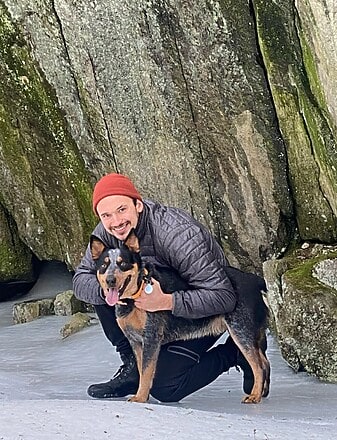
We asked Mikal Malkovich, our new Community Design and Planning Intern, a series of questions about his path to Landscape Architecture/Architecture, and this is what he shared with us:
“As long as I can remember, I have been fascinated by physical space and how the composition of
materials, sounds and organisms combine to define individual and collective experiences. I
always knew I wanted to be a designer but struggled with knowing the scale at which I wanted to
work.
My undergraduate studies focused on Environmental Science and Sustainability. Studying in
Southern California really raised my awareness about the scale of human impact on the
landscape—from the implications of seemingly insignificant behavioral choices we make every
day to the engineering marvels that enable them.
For several years, I worked in exhibition design and operations at a non-profit arts center in San
Francisco that specialized in poster art and printmaking. This experience exposed me to many
interesting people and ideas from the city’s famous counterculture, and it was rewarding to bring
art and experiences to the public, but I felt like my passion and ability to inspire greater changes
lay elsewhere. Just before the pandemic started, I decided to return to Massachusetts to pursue a
dual-masters in Architecture and Landscape Architecture at UMass Amherst.
Having worked with Thomas Douglas Architects for the past couple of years, I am now excited
to get some exposure and professional experience on the landscape architecture and planning
side of design. Dodson & Flinker is working on projects that will shape the future of the built
environment on a broad scale by defining the parameters for architecture and landscape
architecture projects through zoning and design guidelines. Developing my understanding, and
working towards a synergy of these scales, is the primary inspiration of my academic and
professional pursuits.”
What is your favorite designed landscape?
“Having lived in California for many years, I have drawn so much energy and inspiration from the
epic landscapes found all over the west coast: Joshua Tree, Muir Woods, Sequoia National Park
and Klamath National Forest, to name a few.
On a smaller scale, I have always been drawn to Zen and naturalistic aesthetics. Tadao Ando is
one of my favorite architects because his projects are always highly informed by the site and
often blur the division between architecture and landscape architecture. Ando’s ability to distill
the meaning and form of his projects to their essence makes them universal and timeless.”
What do you love about the profession?
“My mind has always been geared towards the spatial and tactile qualities of things. Architecture
and Landscape architecture allow me to harness these passions and skills in a way that is
meaningful to myself and others. I love working in a creative environment, where there is not
always a definitive answer and unknowns are embraced, discussed, and further explored.”
What drew you to those fields? What motivates you?
“We are at such a challenging and critical moment, both politically and ecologically. Enhanced
awareness and connection to the natural world is the most powerful way to transform human
civilization for the better. What better way to achieve this goal than by designing the spaces
through which people experience the world to inspire contemplation and new understandings of
the natural forces that nourish us.
While architects and landscape architects often collaborate, there seems to be a stark divide
between the professions and their approach to design. I hope that my experiences on both sides
will allow me to better understand the differences and work toward bridging the gap between
these inseparable disciplines.”
What are you working on at Dodson & Flinker?
“I have spent most of my time cataloging and evaluating contemporary housing typologies and
exploring how new residential and mixed-use development can integrate within rural and
suburban New England landscapes.”
What have you learned so far?
“So far, my experience has emphasized how many different perspectives and experiences must be
balanced (even within relatively homogenous communities of Massachusetts). We talk so much
about inclusive and universal design, in terms of accessibility, but also culturally and
socioeconomically. Consensus will always be a moving target and there will always be people
who feel overlooked or left out, but I believe it is our job as designers to truly listen and draw
from as broad a range of sources as possible in order to create the best possible outcomes.
Democracy and community participation are the best tools we have to aid these efforts.
I have also been struck by the importance of cars and parking—both the physical space
requirements and how much it consumes our thinking about architecture and landscape
architecture at every scale.
What advice do you have for us or other similar firms? What makes an internship
successful from your perspective?
I have been in graduate school for the past two and half years, which is very fun and also slightly
untethered from reality. It is valuable and important to pursue theoretical discussions and
explorations, but they ultimately need to be tied to tangible work. I have often heard that recent
design grads are shocked (not in a good way) about the disconnect between school and
professional practice. I really appreciate the fact that I have been able to engage with the ideas of
the firm and understand the context of the projects I am working on. I think it is invaluable for
firms to engage with and listen to the younger generations rather than simply expecting them to
conform. We need everyone’s creative solutions to solve the problems of the present and future.”
